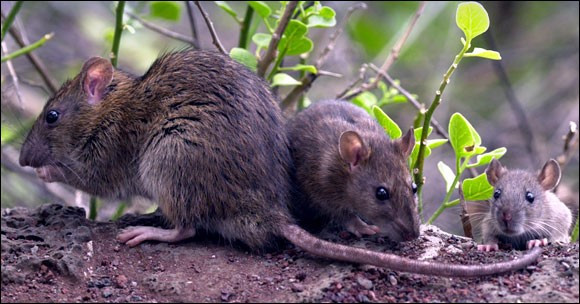Alien invasive species wreaking havoc on ecosystems across countries at unprecedented rates
Cogongrass, feral pigs, and water hyacinth are some of the species that have had a negative impact on the environment.

Human activities have been responsible for introducing more than 37,000 alien species, including plants and animals, to different regions across the globe, revealed a new study by the Intergovernmental Platform on Biodiversity and Ecosystem Services (IPBES) on Monday.
Over 3,500 of these species have played a significant role in the extinction of plant and animal species over the years and are travelling around the world at "unprecedented rates."
The IBPES is an independent intergovernmental body that came into existence in 2012 to enable states to strengthen the science-policy interface for biodiversity and ecosystem services.
It has carried out several studies in the past to understand the impact that human activities such as trade and travel have had on the environment.
The findings of its latest study come as a stark warning as the world suffers the consequences of human interference with the natural environment. Experts from as many as 49 countries took part in the study, which was conducted over a period of four years.
It says that the number of alien species has been increasing continuously. "About 6% of alien plants; 22% of alien invertebrates; 14% of alien vertebrates; and 11% of alien microbes are known to be invasive, posing major risks to nature and to people," reads an excerpt from the report.
"Invasive alien species have been a major factor in 60% and the only driver in 16% of global animal and plant extinctions that we have recorded, and at least 218 invasive alien species have been responsible for more than 1,200 local extinctions," it added.
The report highlights how invasive alien species have been causing greater damage to wildlife and human health than previously thought.
Increasing trade and tourism have led to an increasing number of alien species, while climate change may also be responsible for spreading these species as some areas have become better suited to foreign plants and animals.
How do alien species affect local ecosystems?
A species is considered "invasive" if it has a negative impact on its surroundings and is not native to an ecosystem.
Cogongrass, feral pigs, European green crabs, Dutch elm disease, and water hyacinth are some of the species that have had a negative impact after being introduced to new environments.
Water hyacinth has been threatening East Africa's Lake Victoria. The lake is shared by Tanzania, Kenya, and Uganda and is being choked by water hyacinth as it blocks water flow to the lake from tributaries. It has also become a threat to fisheries and has led to the depletion of tilapia.
Cogongrass increases the threat of wildfires as it burns faster, while feral pigs are a threat to wildlife as they can eat almost anything. The researchers have warned that invasive species are not only affecting the environment but have also been causing terrible loss of life.
The experts say that the recent wildfires in Hawaii were driven by flammable invasive grasses that were brought to the region from Africa as livestock pasture. The wildfires claimed the lives of at least 115 people.
European green crabs have proved detrimental to commercial fisheries in New England. They eat native shellfish and outcompete other species for food.
The most dangerous alien invasive species to human health is the Asian tiger mosquito, which made its way to Europe through intercontinental trade. It causes over 20 known diseases, including chikungunya fever and yellow fever, the latter of which can prove fatal.
They cost over $400 billion (£336 billion) every year. The IPBES report has warned that global warming and climate change could lead to the "expansion of invasive species.
"Invasive alien species are a major threat to biodiversity and can cause irreversible damage to nature, including local and global species extinctions, and also threaten human wellbeing," wrote Roy, Professor Anibal Pauchard, and Professor Peter Stoett, who led the research.
© Copyright IBTimes 2025. All rights reserved.





















